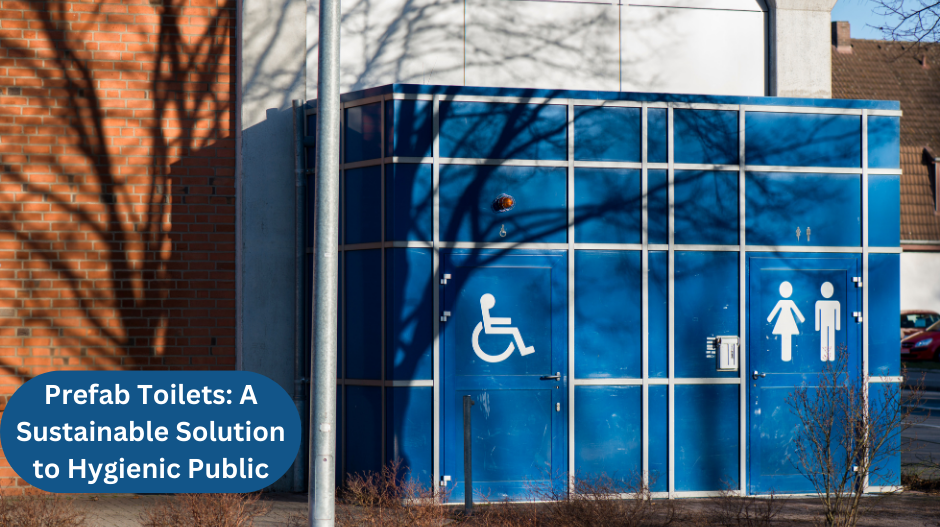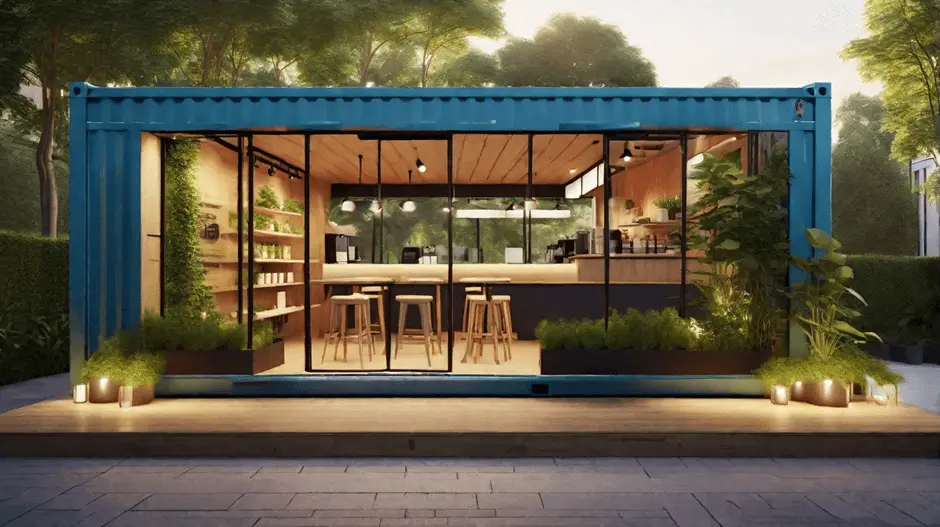Introduction

Introduction Prefab Toilets An Eco-Friendly Approach to Public Sanitation
As the urban population increases day by day and grows very fast pace a proper public sanitation system has become the need of the hour. Nowadays traditional physical toilet structures are costly, cumbersome, and expensive to construct and maintain, particularly in areas of low accessibility or high population densities. It is at this juncture that prefabricated or prefab, toilets can effectively serve as an innovative and viable solution towards meeting the population’s need for clean and accessible public lavatories.
Understanding Prefab Toilets
Prefab toilets refer to toilets that are assembled in a factory and then they are transported to the site where they are supposed to be used. It is also important to note that these toilets are more modular toilets since they can be erected, dismantled, and relocated with relative ease. The materials used in prefab toilets include steel, fiber-reinforced plastic (FRP), high-density polyethylene (HDPE), polyvinyl chloride (PVC). Besides being strong, these are materials that do not decompose easily, especially under harsh weather conditions.
For instance, PVC has been widely adopted in the production of PVC toilet cabins because of its lightweight characteristics, non-corrosive nature, and ease of cleaning. When compared to other types of cabins, PVC toilet cabins are relatively cheap and durable, which adds to their popularity in construction sites, public places such as parks, and many more.
Prefab toilets are common, and they are available in different styles, and sizes to meet the varying requirements. These facilities vary from single-unit toilets to huge complexes and can include innovations like ventilation, solar lighting, and water-efficient flushes. There are even more sophisticated models that come with technologies of waste treatment like bio-digester where human and animal wastes are also converted to harmless by-products.
The Environmental and Economic Benefits
One of the major benefits of prefab toilets is sustainability. The other traditional toilet types may use large quantities of water to flush and clean, thus contributing to the wastage of the scarce locally available water resources. Prefab toilets for their part can be contained with little water or even devoid of water through elements like composting or vacuum flush. This behavior of using less water also helps to save one of the most precious natural resources, and at the same time, the discharge of sewage also reduces its negative effects on the environment.
In addition, most of the materials used in prefab toilets as well as those used by PVC toilet cabin manufacturers are recyclable or derived from recycled materials hence minimizing the impact on the natural environment. For instance PVC, FRP and HDPE are all strong surface materials that can go through several years of usage without getting easily damaged. With the ending of their life, such materials can be recycled and thus will support circular economy opportunities.
From the economic point of view, the use of prefab toilets is cheaper in the following ways. First, the manufactured process in a controlled factory environment contributing to a consistent quality and thereby minimizing the construction delays and expensive costs. Second, given the fact that modern prefab toilets are built in segments, these facilities can be established in areas that require the necessary number of WCs within a short period of time, for instance, regions affected by natural disasters, or large-scale events. This rapid deployment can prevent the outbreak of disease and enhance public health, thus reducing the costs of the health systems.
Addressing Public Health Challenges
Sanitation is a basic human right that is still increasingly being denied by residents of the contemporary world since they lack proper toilet facilities. This lack of sanitation is a key cause of diseases like cholera, diarrhea, and typhoid especially in crowded cities or camps. These public health challenges can be addressed through prefab toilets because they are safe and hygienic and constructed where other washrooms are not possible.
Due to the high costs of installation and need for technological advancement in construction, many areas in developing countries do not have proper toilet facilities. Prefab toilets, especially those offered by PVC toilet cabin manufacturers, can make a significant difference in the mentioned regions due to their affordability and time-saving construction compared to the regular toilets. Moreover, because prefab toilets are mobile, they can simply be moved around as the specific areas where sanitation is required are identified.
Another aspect is that the application of waste treatment technologies in prefab toilets also has an impact on the enhancement of people’s health. Bio-digesters and similar systems do not only minimize the hazards of human waste on ecosystems but also address the problem of localized implement collection, which may be costly and sometimes impractical, especially for rural communities. Since prefabricated toilets manage their waste independently, there is no risk of spoiling the villages’ drinking water or spreading diseases that could harm residents.
Toward the future of public sanitation
As urban density rises and people’s requirements for public hygiene rise, prefab toilets will be able to contribute significantly to solving these issues. Prefab toilets are gradually gaining importance in utilizing in governments and municipalities of the world because of their many advantages and start using them in their urban development plans. For instance, Indian cities have embraced the use of prefabricated toilets in their bid to attain innovative open defecation urban centers resulting in accrued better public health standards and sanitation.
Besides, prefab toilets can also be used in many other situations apart from the usual public washrooms. They can be installed in schools, parks, construction companies, and even in the rural areas where there is little or no access to some of the effective means of sanitation. While new innovations in technology keep on emerging in prefab, what is forecasted for the future, are components such as automatic monitoring of a unit which it would show in real-time how often it is used and when maintenance may be required.
Therefore, it can be summed up that concerns about using prefab toilets as an effective and environmentally friendly solution to the question of sanitation in the context of developing countries. Due to their environmental advantages, low cost, and versatility in terms of the problems they can solve in the health domain, they are suitable for both urban and rural settings. Looking for opportunities to advance public sanitation, prefab toilets – or especially, toilets produced by leading PVC toilet cabin manufacturers – are a progressive concept that does not disregard either human health or environmental protection.
